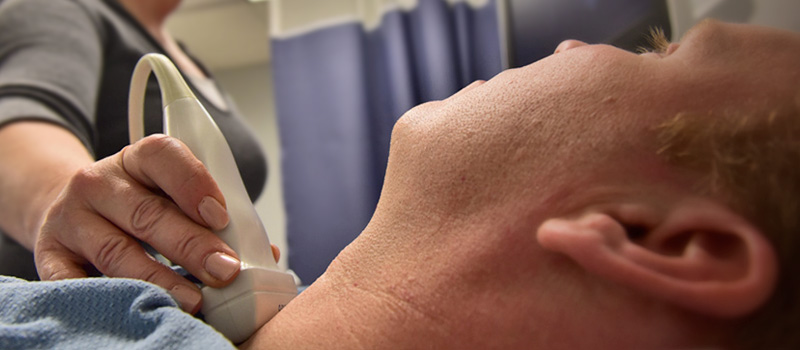22 October, 2018
Thyroid nodule diagnosis, how to tell if it is benign

The importance of studying a thyroid nodule lies in being able to gauge the nature thereof; i.e., we are concerned whether it is benign or not. Once we have this information, we can plan the course of action to take. Nowadays, we have highly reliable and specific thyroid nodules diagnostic tests. Let us see what they are and how they work…
THYROID ULTRASONOGRAPHY
The principal diagnostic test for thyroid nodules is high-definition ultrasound thyroid scan. This is the first supplementary examination we must carry out (after the physical examination of the patient and blood tests). This ultrasound scan will provide extremely valuable information, which will determine the next diagnostic step. If the lesion presents as non-specific or benign, we can relax and recommend follow-up in a few months or discharge. If the lesion clearly appears to be malign, we will need to proceed with the study thereof and recommend surgery.
“High-definition ultrasound thyroid scans offer extremely valuable information, which will determine the following diagnostic step”
TI-RADS, MAXIMUM OBJECTIVITY AND CONFIDENCE IN THYROID NODULE DIAGNOSIS
Sometimes, diagnosis is straightforward and clear, but, in the majority of cases, establishing this diagnosis is not a simple matter. In the diagnosis of thyroid nodules we will be operating in a broad spectrum of greys, which may render the taking of decisions excessively subjective and at times erroneous. With the aim of unifying criteria, and ensuring maximum diagnostic objectivity and accuracy, the Spanish Society of Surgeons (AEC), the Spanish Society of Endocrinology and Nutrition (SEEN), and the American Thyroid Association (ATA) are encouraging their physicians to adopt a classification of ultrasound characterisation known by the acronym, TI-RADS. This classification enables us to stratify the risk of nodule malignancy on the basis of their ultrasound characteristics. In this way, the subjectivity and errors are reduced, obtaining a more accurate diagnosis and, thus, better results for patients.
Photo by: USairforce – Airman 1st Class Rhett Isbell | VIRIN: 171205-F-PB217-1093.JPG







